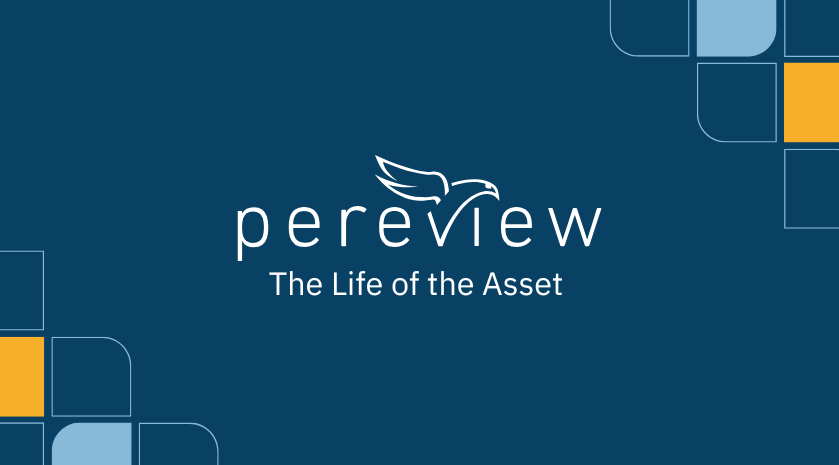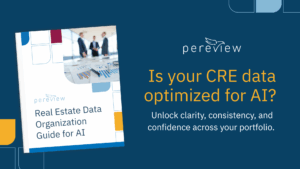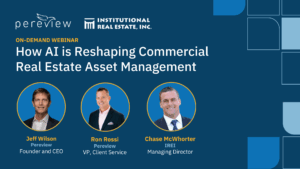A real estate expert explains how bad underwriting data negatively impacts your ability to manage your real estate assets.
A real estate expert explains how bad underwriting data negatively impacts your ability to manage your real estate assets.
When considering the lifecycle of a real estate asset, no stage is more important than underwriting, and no component of underwriting is more important than data collection and analysis.
In that case, commercial real estate companies are investing in top-of-the-line data collection, management, and reporting systems, right? Not exactly. More often than not, they are dumping data into an Excel file (or several), without much thought on how they will make that data actionable in the future.
Why Underwriting is Critical
To get an idea of why underwriting data is so critical to the Life of the Asset®, and to learn more about how companies could (and should) turn their data into a competitive advantage, we turned to Derek Thornhill.
Derek has a wealth of experience in the real estate industry, having worked for some of the largest real estate investment managers in the world.
He was interviewed in September 2018 by Matt Hooper, Pereview’s marketing director.
Matt Hooper: Why is underwriting such a critical part of the acquisition process?
Derek Thornhill: Well, it’s the first step an organization takes in the process of manufacturing data for their business – in that it tells an organization whether or not a particular acquisition fits within their investment strategy. It’s the starting point for capturing the important asset-level information that’s used to drive the acquisition process forward.
MH: So, in the context of the life of the asset, this is the asset’s first breath, more or less?
DT: Right. The dataset established during underwriting is the foundation for information that will be leveraged for the life of the asset. Over time, additional data is added and is used for reporting at all levels as you move from acquisition to operating the asset and, finally, through disposition.
MH: How does that data get captured?
DT: Usually in Excel – and that’s almost exclusively across the industry. And they’ll create separate models for each acquisition and/or asset.
How Bad Underwriting Data is Created
MH: As someone who uses Excel for a variety of functions unrelated to commercial real estate, I can imagine there are drawbacks to relying on it as a central database for data this complex.
DT: Oh, for sure. It’s common for companies to have Excel ecosystems consisting of multiple files with disparate data sets. Compounding it all, some of it is stored in one location, some of it stored in another location. And, yes, the majority of real estate firms struggle with this. It’s hard to leverage data consistently and generate reports from disparate data sets in various Excel files. It takes a lot of time and manual effort. Ideally, companies should be relying on a specialized software product or solution for underwriting – but, unfortunately, too few do.
MH: Once this underwriting data is captured, how is it put to use?
DT: The data gathered during the process allows the company to assemble a complete picture of an asset prior to acquisition. This is all the nitty-gritty stuff — property details, financials, rent rolls, and operational and performance information.
MH: And the benefit to the company is?
DT: The benefit is that it can be a real competitive advantage. There’s a huge upside to being able to capture data from a seller and efficiently analyze it, especially in markets where assets are trading quickly with compressed closing cycles. That is critical for determining if an acquisition is plausible or not.
How to Solve Bad Underwriting Data with Standardization
MH: Are there opportunities to standardize the process of capturing data?
DT: Absolutely. There’s no doubt that real estate firms are coming to terms with the importance and value of data. This industry is being shaped by people who understand how to get, analyze, and leverage data. Standardization forces companies to think through the details of their business and determine what data is essential to their investment strategy, operating model, and reporting requirements. The speed at which information travels, and our desire for instant access to data, will force this upon the industry. It’s not a question of “if,” but “when.”
MH: What’s the value proposition of standardization?
DT: Standardization allows you to consistently and quickly capture data and analyze it. Moreover, the process is repeatable – creating a competitive advantage. Remember what we were saying earlier about the critical nature of this process – that it’s the beginning of the life of the asset? Well, wouldn’t you want the most critical step of the process to be consistent, quick, and repeatable – and a way to ensure a competitive advantage? Sure, you would. After all, time is money.
MH: And time saved in one area is time that can be invested in another area, right?
DT: Right! A company’s ability to efficiently and effectively manage the underwriting process will allow them to look at more deals and quickly determine the value of investing more time or moving to the next deal. And that’s just one ancillary benefit. Another is that all of the data gathered during this process can be leveraged going forward, because it is captured in a structured way.
The Impact of Underwriting
MH: So, let’s bring the asset manager into this conversation. If underwriting occupies a space near the beginning of the life of the asset, the asset manager is a little further down the lifecycle. Why does that asset manager care about all of the things we’ve discussed?
DT: Because they have a vested interest in the asset. The more you know and understand about the asset, the better prepared you’ll be to operate it effectively. The underwriting process is essentially your opportunity to act as if the asset is a part of your portfolio, so you model multiple scenarios for outcomes based on real data. Once the asset is acquired, an asset manager will leverage the data set from underwriting to operate the asset. It really is the foundation for everything going forward. Without the data, an asset manager would be flying blind.
MH: What other downstream operations are impacted by underwriting data?
DT: All organizations need to know how an asset was initially underwritten at the time of acquisition. It’s the baseline for measuring the performance of the asset compared to budgets, business plans, and actuals. The measure of effectively executing your investment strategy is based on this data set. Underwriting information is both a driver and a measure that will show up in operational and investor reports.
MH: Is all data beneficial, even the data surrounding dead deals?
DT: Of course. The more data you capture, the more you can do with your data. By having standardized data management, firms can perform meaningful analysis across their portfolios to understand what drives their success. So, yes, even dead deals have value. Sometimes those deals come back around as a potential acquisition target, so having the ability to leverage the previous data captured can provide a catalyst for the current underwriting process. Dead deals also provide you with valuable market and comp data that can be used in other asset analysis for future acquisitions.
How Pereview Benefits Underwriting Data
MH: Earlier we were discussing the potential pitfalls that come from having data distributed across multiple Excel spreadsheets, in multiple locations. You mentioned that having a specialized software or product would be a much better strategy. That’s what Pereview is for, right?
DT: It absolutely is. Pereview is the only commercial real estate asset management software that covers the life of the asset, from acquisition to disposition – including underwriting. Because of its efficiency, Pereview clients have been growing assets under management without growing their headcount.
MH: How does one determine whether Pereview is the right product for them?
DT: They should visit our website – PereviewSoftware.com – and then give us a call. We’d be happy to arrange a demo.



